Born and Raised in Vegas?
Interested in Las Vegas history?
KSNV: Born And Raised
Las Vegas is a young city where not many can boast they've been born and raised here - but those who can have stories of rapid growth, vast change and a town that forces you to grow up quick. Come behind the scenes of this Las Vegas Weekly photo shoot to meet four generations of native Las Vegans and hear their stories of coming to age in Sin City.
Las Vegas is a young city and not many can boast they've been born and raised here. Those who can have mountains of tales from a town where kids seem to grow up fast and the only constant is change.
For Las Vegas natives, home means Nevada.
As a follow-up to April Corbin's story about Las Vegas natives, the Sun asked readers to share their stories about being born and raised in Southern Nevada. One reader told us about the birth of Texas Hold 'Em and dealing the first hand to his boss -- famed poker executive Bill Boyd. Others told us about going to college at a nascent UNLV (which they reminded us was first called Nevada Southern). Frank Sinatra and Red Foxx are among the notables that locals have personal memories of.
They talked about casinos of yesteryear: The Frontier, the Aladdin, the Moulin Rouge. They remember when Henderson was a small town, when the Boulder Dam (now the Hoover Dam) was under construction. They talk about atomic bomb blasts in the desert. They have fond memories of Helldorado Days, a yearly event that harkens to Las Vegas' Western-themed history, and remember when some of the valley's main thoroughfares were dirt roads.
Some even rode down them on horseback.
The letters they shared with us are below, edited for clarity.
***
Name: Bary Gammell
Age: 66
Occupation: Retired one year ago from the Internal Revenue Service
Current address: Midvale, Utah
In my own words, on being born and raised in Las Vegas:
I was born in January 1945 at the hospital on 7th and Ogden. I attended North 9th and Sunrise Acres elementary schools, Rancho High School and Nevada Southern University (now UNLV).
I grew up on Cervantes Street, just north of Fremont, between 20th and 21st. My mother, Olive, is 93 years old and still lives in Las Vegas. Although I now live in Midvale, Utah, I still have condo property near Charleston and Durango.
Las Vegas was a great place to grow up in the 1950s. It was small and compact with lots of good neighbors. Some of my best memories are of high school and our rivalries with Las Vegas High. Veterans Day was the annual football rivalry with a parade to mark the occasion. The night before (and most weekends) there was endless cruising of Fremont Street. We went through downtown and used the train station as a turn-around to head back down to 15th.
I remember drag races from 15th to 18th and then through the Blue Onion drive-in, both ways, and back up Fremont. The traffic was slow from 5th to Main and you could talk to those going the opposite direction and make challenges for the next day's football game or invite the girls to change cars. It was all great fun.
The other great yearly event on Fremont Street was the Helldorado Days parade. My uncle, Glen Anderson, owned National Car Rental and he would let us drive with him in his three-wheel Messerschmitt car.
Before buying National Car Rental, my Uncle Glen ran Hertz and the garage. I worked there one summer when I was quite young. I just sat there and if a customer came in I called my uncle's main office out on the Strip. The Strip location is now gone. When Spring Mountain was extended east across the Strip, they had to buy my uncle’s gas station and the rental offices. When I was in high school and had a driver's license, I worked there and the National rental counter at the old, original McCarran airport (now an executive terminal) just off the Strip.
In 1962, I was on the Rancho High School Junior Prom Committee. The prom queen, Deanna Dutton, married Tim Martin, who was the junior class president. They have been married more than 40 years.
I have so many memories from the 1950s and early 1960s, but I did move away to attend college and never came back permanently, just to visit family. I did my freshman year in Las Vegas, then went to Utah in 1964 and graduated from Weber State College in 1970 with a bachelor's in math and education; I served an LDS mission in Ontario, Canada, before my junior year, 1965-1967.
When I attended what is now UNLV, there was an administrative building, a library, a fine arts building, a science building and a gym. That was about it. I was walking to the science building for calculus class when the reports came in that JFK had been shot. The whole school closed down and we went home to watch everything unfold on TV.
***
Name: Kellie Guild
Age: 41
Occupation: English teacher at Advanced Technologies Academy
Current address: Summerlin
In my own words, on being born and raised in Las Vegas:
I am one of few that can say, "I and my two sons were born at Sunrise Hospital." Growing up in this city, I vowed I would never live here as I felt there was nothing for kids. I was wrong. After spending five years living away, I was so glad to be back and cannot image living anywhere else as Las Vegas spoils those who live here.
I remember having Friday night dinners at Macayos on East Charleston and Boulder Highway. Our entire family could eat for under $10. I remember going to see the foundation of my godparents’ home in Spring Valley in 1974 and the only things out there were the cement company and a 7-Eleven at Flamingo and Rainbow. We thought they were crazy for wanting to live in the boondocks. I remember shopping with my mom at the MayFair Market at Tropicana and Paradise. There was a nice lady who always gave me a cookie at the bakery counter. Not many can say that a Lido Showgirl taught them ballet and tap, but I can. We even had one of our dance recitals on the stage at the Stardust as a result.
One of my fondest memories was marching down the Strip for Helldorado in band then going to the rodeo afterwards.
It is fun for me to take my two sons to the places I experienced as a kid: The pumpkin patch at Gilgrease, the Anderson Dairy, Spring Mountain Ranch, Red Rock Canyon, Macayos, and Freed's. I could not imagine growing up anywhere else.
***
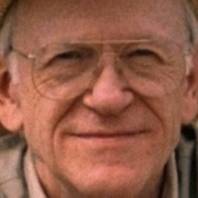
Sam O'Connor
On Bill Boyd and Texas Hold 'Em
Once upon a time, in the old west town of Las Vegas, on a very slow day in 1960, there were only two poker games spread at the Golden Nugget, a dollar limit five-card stud game for the tourists and a two and four low ball game for the locals. Half the dealers and most of the shills were standing idle, reluctantly getting to know each other better. On that particular day, payroll was not cost effective and Bill Boyd was pacing. It was time for innovation. It was time to expand. It was time for Texas Hold ‘Em.
Bill gathered the idle dealers and spare shills and seated them promptly at an empty table. A shill named Slim Johnson proceeded to teach Bill and his employees, including me, the rules of Texas Hold ‘Em. The idle dealers took turns behind the rack. Bill Boyd immediately saw that seven cards with five of them shared by all the players, it was hard to protect a hand.
Players were placed on more equal footing than, say, seven card stud and, therefore, the money would cross the table more times and a little of it slip into the house’s box during each trip. Bill immediately declared hold 'em a winner for the house. The trouble was that it wouldn’t be played to any extent until the 1970s, and to no great extent until the 1980s.
I was a dealer in my mid-20s, working my way up the ladder, hoping someday to be assigned my own swing shift game. I dealt the Hold ‘Em game that fateful introductory day in 1960 at the Golden Nugget, a day that will be unwittingly celebrated every day in poker arenas on the Internet and every year in championship poker tournaments around the world. It was from the Golden Nugget that the game eventually made its way across the street to Binion’s Horseshoe where it was promoted into a poker realm of fame and fortune.
In 1960, all dealers and players were used to five card games and occasional seven card stud. Hold ‘Em didn’t seem much like real poker by the day’s standards. It was easy to see, in the Nugget practice game, that many of the winning hands were draw-out hands. I couldn’t fathom how players, in real play, could ever be attracted to so little hand protection and its many draw-outs. Little did I know that odds would be calculated, play would become sophisticated, and the playing skills in the game would be honed by experts to systematically pry the weak player from his money.
At the end of the first day of Hold ‘Em, Bill Boyd shouted to me, “Hey, Kid. It’s time you had a game to deal. You can have this one if you want it.”
I shouted back to my esteemed employer. “No, thanks, Boss. I’ll wait for a real game. Hold ‘Em isn’t going to amount to anything. NOBODY’S EVER GOING TO PLAY IT.”
Name: Sam O'Connor
Age: 78
Occupation: Retired dealer
Current address: Green Valley
In my own words, on living in Las Vegas:
I remember …
-- When there were horses tied to the parking meters in front of the Boulder Club.
-- When Dean Martin dealt "21" to me at the Sands.
-- When I dealt the first hand of Hold 'Em at the Golden Nugget in 1960.
-- When Martin Luther King spoke at the Moulin Rouge.
-- When the first Japanese businessman bought the Aladdin.
-- When there was only one traffic light on the Strip.
-- When some downtown casinos still had sawdust on the floor.
-- When one-armed bandits made a "clank" instead of a whistle.
-- When tourists would gawk at the sight of a $100 bill.
-- When Don Rickles welcomed Frank Sinatra to his show at the Sahara, "Frank! Come on in. Make yourself comfortable. Hit somebody!" I was there.
-- When George Burns introduced Ann-Margret in his show. I was there and went backstage afterwards with a singer I was dating.
I first came to Las Vegas in 1956. I moved here with wife and kids in 1959. My first job was as a poker dealer at The Golden Nugget in 1959. I've dealt poker at the Nugget, the Fremont, the Dunes and the Aladdin. I've dealt craps and 21 at the Castaways and the Hacienda.
Living in the gambling business in the 1960s was a “gas,” in the Sinatra vernacular of the day. The town was alive and throbbing. There was the surface entertainment that the weekend visitor knew and enjoyed exploring. But dear to those of us who lived there was the smug knowledge that it was also an insider’s playground, a familiar turf that was fun to know and to move around in. Below the bright glitter, was Las Vegas’ shadowy underbelly.
In 1960, one of the most prominent poker figures was Bill Boyd. He was known as the best five-card stud player on the planet. But Bill Boyd’s highest talent was managing a card room and his insightful contributions to casino poker are many. He introduced the center deal to Las Vegas, which is now in every casino in the nation. He replaced poker decks with the plastic bridge decks that are now used everywhere. (You could hear the dealers at the Golden Nugget scream about the small plastic decks, all the way to the Hacienda on the southern end of the Strip.) Bill also introduced the “snatch and grab” overraked five card stud game which was designed to fleece the tourists. It proliferated, much to the shame of an otherwise glowing history of Las Vegas poker.
The 1960 Las Vegas atmosphere was heady and magical. It was the era of The Rat Pack and Ocean’s Eleven -- the original. Dean Martin was dealing “21” at the Sands, giving the money away, and driving the pit bosses crazy. Sinatra was getting in fistfights and driving his dentist wealthy. Those were the days when $5 for the captain could get you into most main shows in town, but a $500 bill couldn’t buy your way to see Frank, Dean and Sammy at the Sands.
In 1960, lounge shows were a bargain. There were Vicki Carr, Della Reese, Louie Prima and others, entertaining visiting and local revelers in the casino lounges. Customers were entertained for the price of a drink. You could drop in on Don Rickles at the Sahara without a reservation or an admission fee.
I was there at the 3 a.m. Rickles show, nursing my scotch rocks, the famous night Sinatra arrived with his entourage. Rickles, who had just built his act to a wonderful humorous momentum, spotted Frank coming down the aisle. Rickles stopped in mid-sentence. “Frank! Come on in! Make yourself at home –- hit somebody!”
There were only five card rooms in town in those days and one of them wasn’t even a poker room; the Sahara had a panguingue card room for the ladies from Los Angeles. And there was Faro, the game that built the west, dealt at the Stardust on the Strip and at the Las Vegas Club downtown. The remaining four card rooms, Golden Nugget, Fremont, Stardust and Dunes, contained the only casino poker in town.
***
Name: Darryl Hutchings
Age: 50
Occupation: Works in insurance for United Healthcare
Current address: Summerlin
In my own words, on being born and raised in Las Vegas:
I could write all morning about memories of growing up here. We had a great life. I was born at Las Vegas Hospital, which is no longer there but was added to the National Register for Historic Places in 2000. I graduated from Rancho High in 1979.
In the 1970s, I had a friend whose father was an executive at Caesars Palace. He got me a job as an usher for the fight between Muhammad Ali and Leon Spinks at the Las Vegas Hilton in 1978. Having a friend like that allowed me to see Las Vegas about the same as a "VIP High Roller" might experience Las Vegas in those days. We got the best seats to see performers such as Paul Anka, Wayne Newton and others. We got tickets every year to see the Alan King Tennis Classic at Caesars Palace. That was a unique sporting event because the prize at the end of the tournament was a wheelbarrow full of silver dollars.
Another friend's father was a dealer at the Las Vegas Hilton. He got the Hilton to sponsor our little league baseball team. (It's nearly impossible to get a large corporation to sponsor any sports teams now.) There was another team in the league called the Redd Foxx Reds. Redd Foxx, from "Sanford and Son" fame, was a regular entertainer in Las Vegas and actually owned a home here. He would actually come to the games and sit on the bench with the kids while the game was going on. We didn't believe it was actually him so we left our bench to go over and watch him talk to the kids. I remember he had a lady with him who was feeding him mandarin orange slices while he signed autographs.
In the late 1960s, there was some racial strife in the school district in Las Vegas. A lawsuit was filed and in 1968, the District Court held that schools in Las Vegas were racially segregated and the school district was forced to come up with a plan to desegregate. As a result of this action, the school district came up with the "Sixth Grade Center Plan" in which students from mostly white neighborhoods would be bused to predominantly black neighborhoods in Las Vegas, referred to as the "West Side." Six schools on the West Side were made into these sixth grade centers. I was zoned for one of the six, namely Quannah McCall Elementary School. My class was part of the inaugural plan in 1972-73.
Since this was the first time anything like this had been tried, there was a lot of anxiety. Some parents warned that they would not allow their kids to participate. Of course, parents were concerned about their children's safety. As it turned out there was no need for alarm. The school was innovative in making kids feel like they were part of something new and special.
The best part of the plan was that the students were given an opportunity to choose one of many activities set aside for a half-day on Fridays. My friends and I couldn't believe that golf was one of the activities to choose from. There were 10 to 15 of us who chose golf as our Friday activity and we were allowed to go to the golf course every Friday and play. The closest golf course to us was the brand new North Las Vegas Golf Course, which was only 9 holes of par 3 golf. It was about the perfect amount of time to play a round of 9 holes and get back to the school in time for our afternoon classes. My mom used to give me a quarter to cover the cost of a soda and candy bar.
And, although I still love to play golf, that was the year that I recorded my only hole-in-one ever. It was a very memorable year.
There were many outdoor activities in the 1970s we participated in. Many people don't realize that the Colorado River had outstanding trout fishing just below Hoover Dam. The favorite spot was Willow Beach, about an hour's drive from Las Vegas. It was considered a "trophy trout" destination. At the restaurant, a "Wall of Fame" was established. If you caught a trout weighing 5 pounds or more you would have your picture taken and added to the wall. Our family spent many Saturdays at Willow Beach trying to secure our spot on the wall. While my dad was more serious about the fishing, we would get bored and go exploring the area. We found a lot of arrowheads and followed trails all around the area.
As teens, we went cliff jumping at Lake Mead. It was fun to see who was brave enough to do different types of flips and dives.
In golf we had tournaments at the par 3 golf course behind the Aladdin Hotel. We were very sad when it was demolished to make room for the Aladdin Theatre for the Performing Arts -- but that turned out to be a great thing because all the rock groups ended up coming there to perform. It was such a fun atmosphere the day of the concerts. I liked it so much I got a job at the Baskin Robbins ice cream store in the Aladdin, near the entrance to the theater. When the concerts got out late at night our little ice cream store was so packed with people, the lines spilled out into the casino.
My wife and I have lived in Summerlin since 1993. We have two sons at Palo Verde High School, one son at Becker Middle School and one son at Lummis Elementary.
***
Name: Kay Jones
Current address: Pahrump
On growing up in Southern Nevada:
I was not born in Nevada but moved here in 1947 when I was in the fourth grade. We then moved to Reno and came back here when I was in high school. I think one of the great things for kids to do was swim at Twin Lakes Pool, especially with the high board. We had the dancing waters at the Desert Inn, much nicer than what we have today -– and in color. The restaurant at the "old airport," watching the planes come and go whole eating. And walking all the way down to the planes to board.
The Strip had very few hotels: Grace Hayes Lodge, Flamingo, the old Frontier and the El Rancho. I can't remember if the Sahara was built -– and the Tropicana was wayyyy out by itself. We were cruising the Strip and saw smoke rising, arriving at the El Rancho before the firefighters. We saw the whole casino go down in flames.
When I got home and told my mother, she didn't believe me and thought I had been drinking until she heard the news on one of our three TV stations.
We had the Blue Angel, and of course the Green Shack. Las Vegas was different and we were different. There are so many great memories of the old Vegas. The springs on Flamingo to swim in. Horseback riding with friends. Cruising the main. I will probably thing of more memories as soon as I finish this -– yes, I still have them. I almost forgot the atomic bomb blasts and how beautiful they were as we climbed trees or whatever we could to get as high as possible to watch them.
***
Name: Mari Bochanis
In my own words, on being born and raised in Las Vegas:
I was born in Henderson in 1956 at St. Rose de Lima, when the nurses were nuns. Going to "town" was a big deal and there was only one way there from Henderson -- Boulder Highway -- and there was not much in between. There was so much desert and you'd always see desert tortoises walking around and most families had one as a pet.
There was one movie theater on Fremont Street and one place to shop for clothes and that was Penney's, also on Fremont Street. Growing up, our favorite family restaurant to take out-of-town guests was Fong's Garden on Charleston, just west of Fremont.
In high school it was so fun to cruise Fremont Street and meet cute boys from other schools. You literally stopped and talked to the people in the car next to you and no one honked as that's what everyone was doing. Our family took the train from the Union Station to Salt Lake City.
My dad was Henderson's first optometrist and he later developed Calico Ridge out in Henderson. He's still alive -- Dr. Melvin Bagley.
***
Name: Bruce Laity
In my own words, on being born and raised in Las Vegas:
In January 1951, while attending sixth grade at the old Fifth Street School, all of us kids had a unique experience. Just before the first atom bomb test we were herded out on the grass on the west side of the school. We were instructed to lay down on the grass as no one knew how the blast would be felt in Las Vegas. A while after the bomb went off we could see the mushroom cloud.
On May 4, 1988, I was the lighting rep for Ingram Supply and call on the Henderson plants twice a week. Luckily, I was not at Pepcon the day of the explosion. A radio announcer asked if anyone could identify the Pepcon voice recording of a man trying to tell any survivor how to get out of the wreckage.
The voice belonged to Roy Westerfield who was the plant's purchasing agent and a major figure in the company. I called Bob Stoldal and told him who Roy was and that he was a friend and customer.
It was like Roy to be the last one at the plant as he tried to tell others how to escape. He was a semi-invalid and was atomized in the second explosion along with the plant manager.
***
Name: Julie Dailey Neil
In my own words, on being born and raised in Las Vegas:
My parents came from Idaho in the early 1950s with several couples who were in education. Mom and Dad opened Rancho High School -- Dad was a coach and Mom was an English teacher. My Mom and Dad, Jack and Sidney Dailey, wrote the alma mater for Rancho.
I was born in 1956 at Southern Nevada Memorial Hospital, now UMC. We lived on Webb Street, just off of Owens. My mother, being an English teacher, always said that you "raise cattle and rear children."
Vegas was a very small town then, only two high schools. Mom and Dad knew a lot of people from all walks of life. If my Dad were to go out, regardless where he went, he would run into at least two people he knew, making him late getting home. We would go out to dinner most Friday nights. We would go to different hotels for dinner, I think the Dunes was my favorite.
I grew up on Sandhill Road. We moved there in 1960. Flamingo was not a road yet, Sandhill was dirt and Tropicana was Bond Road. The original homestead home is still on Sandhill. We had horses, dogs, cats, geese, ducks, rabbits, chickens, birds and other small pets. We were the "farm" in the valley. Our neighbors at the time, Ted and Mamie Taffras, still live next door.
The sand dunes were so high we would play hide and go seek on the horses. We hunted lizards, snakes, horned toads, scorpions, and anything else that moved. The house now (4603 South Sandhill) is a church. There was a nudist camp on Sandhill south of Tropicana. We were forbidden to ride the horses down there.
When they started to build the neighborhood across from us, my dad tried to get friends to invest in the land, people declined as they felt nothing would ever come of Vegas.
Reader poll
We had a beautiful view all the way to Henderson before the El Encanto neighborhood was built. My dad would take us kids in the back of his Datsun truck (sold to him by Bob Gliski) across the desert from Sandhill to Nellis to the Stop N Go that was there. We would ride horses to Paradise Park, tether them and go swimming. Sierra Vista was a fun place to ride to. I remember the old Misty Ranch, now a gas station across from Wayne Newton's place. I remember the Skyway Drive-In, where Boulder Station is, the Italian Village on Boulder Highway.
We would go to the Swanky Club on Boulder Highway every Wednesday for their ribs. I learned to love pickled pig’s feet at the Swanky Club. Mom and Dad would stop there on their way to games as it really was the only restaurant for several miles. I remember going to Hooterville/Hendertucky ... the Eldorado especially. The Showboat was one of my grandmother's favorite, especially for bingo. I remember the racy pictures in the coffee shop: I was always a little embarrassed to see the half-nude ladies.
I remember when Sandhill went straight through to Boulder Highway, and the Tegano car lot was on the right.
Mom and Dad opened Valley High School -- Dad was assistant principal and athletic director, Mom was the Head of the English Department. Mom opened Vo Tec, Dad went to Indian Springs, then opened William E. Ferron as principal. Several of the teachers who taught for Dad at Ferron still get together today. Mom retired from Vo Tec and passed away in 1998. Dad was killed in the flash flood at Nelson's Landing in 1974.
There is a school named after Dad, Jack Dailey Elementary.
Von Tobel’s was the hardware store, Vegas Village and Mayfair Market were the two big grocery stores for us. My mom and her friends would meet on Fridays after school at the Tropicana country club for coffee, sometimes the Dunes Country club. The Jungle Club on Paradise was the place for Mexican food. I remember be able to drive up to the front of the airport and park. We would shop downtown at Ronzone’s and Woolworth's.
I went to Orr Jr. High and I remember when the Irwin Molasky built the Boulevard Mall. The Mall was the place we could hang out. I remember how beautiful Maryland Parkway was with all the trees, how beautiful the Desert Inn Country Club was and all the houses that were on Desert Inn before it was expanded.
I have been married to Russell Neil for 35 years in May. We have a son, John Russell Neil, 20, who is a junior at UNLV majoring in business administration. I retired from media in 2008 and Russ retired after 30 years with Nevada Power 2 years ago. We spend the summer at our mountain home in Cascade, Idaho.
***

A large crowd celebrates the completion of the railroad at Boulder Junction (near the Hoover Dam) on Sept. 17, 1930. Work on the dam began in 1931. Dam workers were forced to stay in tents because Boulder City had not been completely built. That, combined with poor working conditions, led to a strike in 1931. The strike was soon quelled, and by 1932 Boulder City was established.
Name: Julie (Ryan) Floyd
In my own words, on being born and raised in Las Vegas:
My family has been here since 1929. They came out with the railroad. My father was born in old Las Vegas, right across the street from the police station. My great uncle was the chief of police and the fire chief at one time. My grandfather worked on the dam.
My dad said there used to be mesquite trees as far as you can see.
My brother and I were born here in the old part of Sunrise Hospital and raised in old Las Vegas. We were born in 1961 and 1963. Most of my family was born here as were my children and grandchildren.
***
Name: Tammy Martin
In my own words, on being born and raised in Las Vegas:
I was born and raised in Las Vegas, I even have BORNNLV on my license plates.
I remember as a child, all I could see around our home, at Desert Inn and Eastern, was sand dunes -- except for a huge sign I could see, The International, which is the Las Vegas Hilton.
I also remember I use to ride my horse all over town and there was no East Tropicana paved street at all.
My Dad, Russell Martin, worked for Wells Cargo for over forty years here and paved just about all of the streets in LV.
My Aunt Marydean Martin, was the librarian and my Uncle Charlie Silvestri, was Clark County Schools Superintendent for over twenty years.
I have SO MANY stories about my hometown, Las Vegas!
***
Name: Shari Thomas
Age: 55
Current address: Blue Diamond
In my own words, on being born and raised in Southern Nevada:
Our parents met at Sil's Drive-In, mom the waitress and dad the cabby. They married in two weeks and raised six kids here. Dad was head of a union and we all were raised with a serious work ethic and sense of pride in our home town. All but one of my sisters still lives here. My father and both of my husband's parents are still alive and living here, too.
My childhood home was off Decatur and Smoke Ranch Road, but now I live in the small town of Blue Diamond, just above Red Rock Conservation Area. Of all things, my husband, Bruce Nielsen (who is also a native), and I are growers. We grow flowering bedding plants for hotels and landscapers and recently have expanded into growing herbs for restaurants.
My working career started at 14 as a waitress by the pool at the Stardust Hotel. I remember the old Las Vegas Hospital (where we were born), Red Rock long before the "loop," Western was the newest high school, and Decatur and Rancho turned into dirt roads.
This was a great town to be raised in.
We hated Las Vegas as teenagers and couldn't wait to move to California because, as most teenagers feel, there was nothing to do here. Each of us moved away for college or just to try living somewhere else, but returned to our home of Nevada.
Thank you for these stories on locals. People move here, complain about our town and its failings, wishing it was more like where they came from. Whenever I hear this, I gently remind them they can move back to their hometown but please quit criticizing mine.
***
Name: Ruben Valdez
Current residence: Henderson
In my own words, on being born and raised in Southern Nevada:
My name is Ruben Valdez and I was born in 1959 at Southern Nevada Memorial Hospital. I was raised in North Las Vegas.
My parents are from San Antonio, Texas. They came to Las Vegas for work. My dad was a carpenter, but settled as a union laborer. He always preached to me about the unions and driving American cars as I grew up.
I grew up in the only house I know, in the once exclusive "College Park" subdivision near Pecos and Owens. We still own that house, which my dad bought for $18,000. Growing up I remember the outskirts of town being Craig Road, Decatur Boulevard, Sunset Road and Nellis. Eastern was called 25th street. Pecos was at the end of our block and a single lane road. When it rained, it was a river! Lamb and Nellis were also single lane roads. As a young man, my friends and I would ride our bikes to the end of Pecos and, looking east, it was all desert.
With our canteens strapped around our waists we would ride our bikes into the desert until we got to Lamb and then ride back. If we were brave we would cross Lamb and continue riding across the desert onto Nellis and go to Buck's Surplus. It was a huge Army surplus yard. Back then, bicycles weren't like they are now. We all had Schwinn Stingrays with sissybars and high handlebars.
We had a fat tire in the back and a skinny tire in the front, trying to make them look like a chopper motorcycle. It was nothing to trade parts and try to make the bikes look different.
I remember going with my dad for a ride, taking my brothers Rudy, Robert and Roger to work. The ride seemed like it took forever. They worked in an area of town called Pittman. Pittman was on Boulder Highway, between Sunset and Water Street. I also remember an area called Whitney, which was on Boulder Highway between Tropicana and Russell. Back then there was desert between Las Vegas and Henderson. My parents taking me to Henderson -- now that was a treat!!!
The sad part about Vegas is that all the buildings my dad worked on as a laborer -- The Landmark, Sands, Hacienda, Desert Inn, Stardust, Frontier -- are no longer there. My history of construction is the next round: The Luxor, Boulder Station, Hard Rock, New York-New York, Stratosphere, Bellagio, Green Valley Ranch, Wynn, Encore.
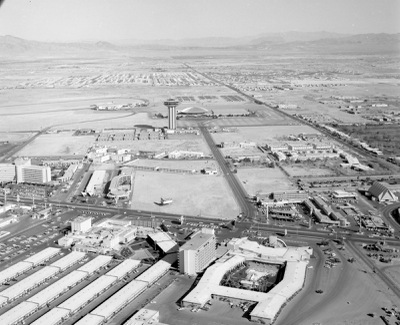
The first iteration of the Las Vegas Convention Center, a flyng saucer-inspired circular building with a shiny metal roof, can bee seen in this March 2, 1965 aerial shot of Las Vegas. In front of it is the incomplete 31-story Landmark Hotel. Early suburban development can also be seen in the distance.
I remember working for Southwest air doing our part in mechanical to assist in the demolition of the original Las Vegas Convention Center on Paradise Road, and for Hansen Mechanical doing our part in the demolition of the Desert Inn to make room for the Wynn.
I guess a good question is: Where is our history, Las Vegas? Is it in the pictures? Is it in the movies? Or, as a priest (Father Greg) once told me, "It's in our memories."
I like that! In our memories...
-- Thanks dad, August 1919 to June 23, 2006
-- Thanks momma, December 1919 to December 10, 2010.
I love Las Vegas; I love the era I grew up in! For my grandchildren Abby, Kara and Lincoln, These memories I pass onto you.
***
- Compiled by Cara McCoy

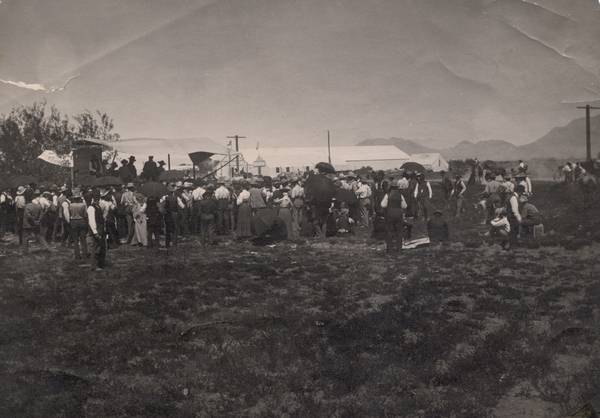
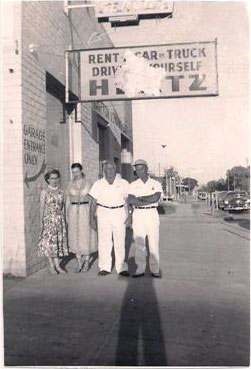
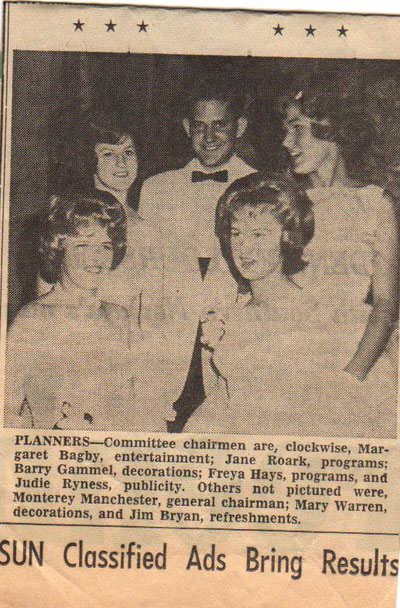

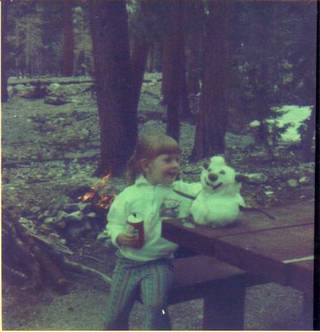
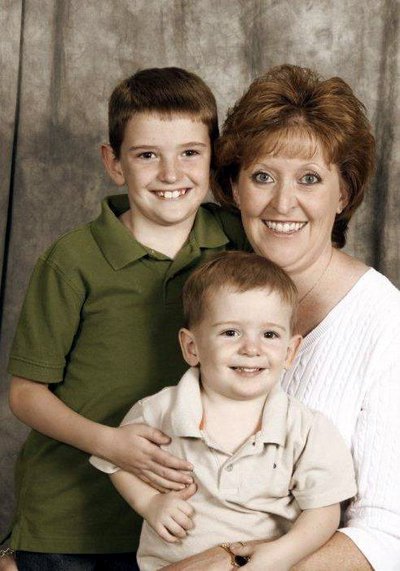
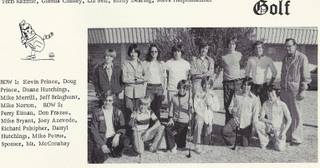
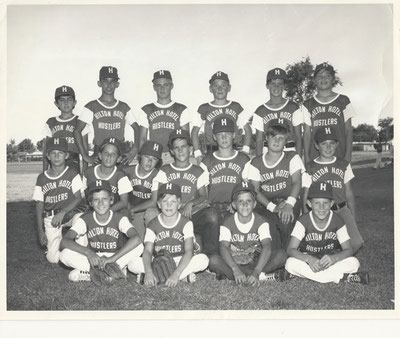
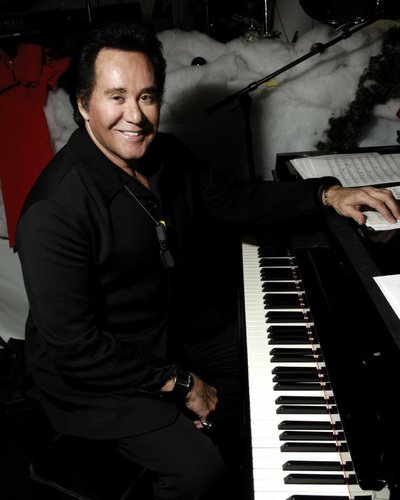
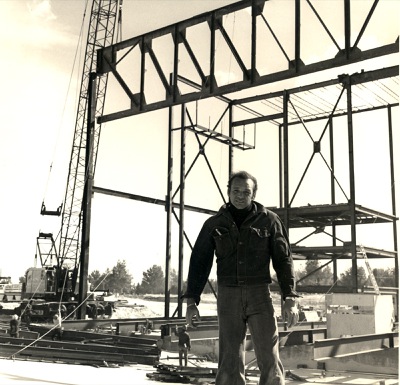
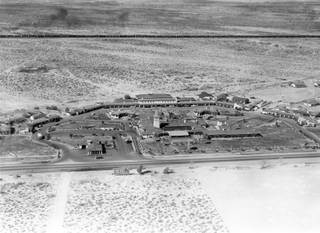
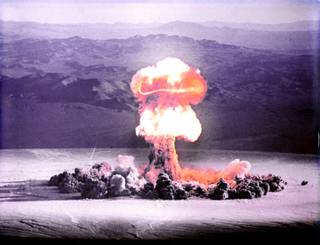
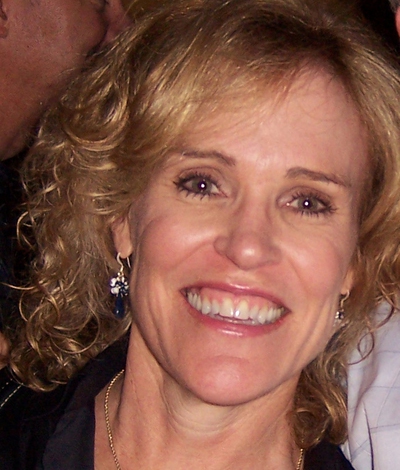
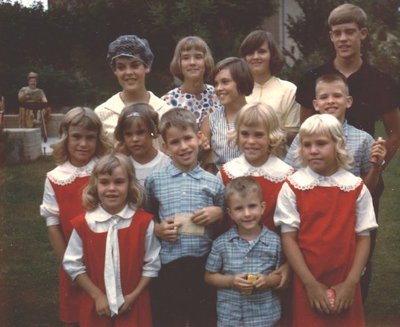
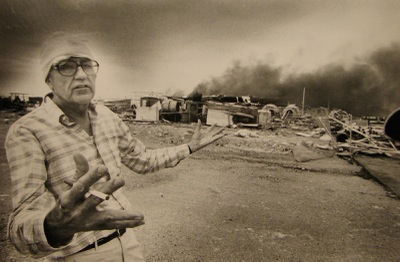
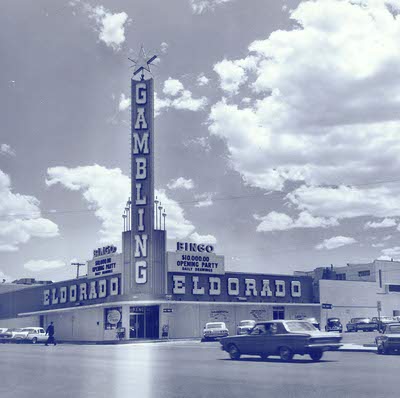
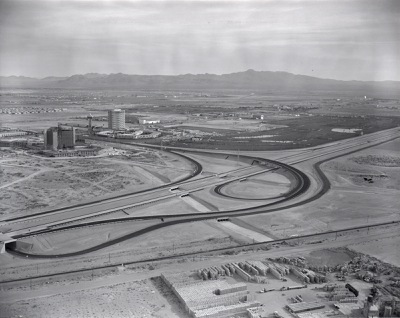
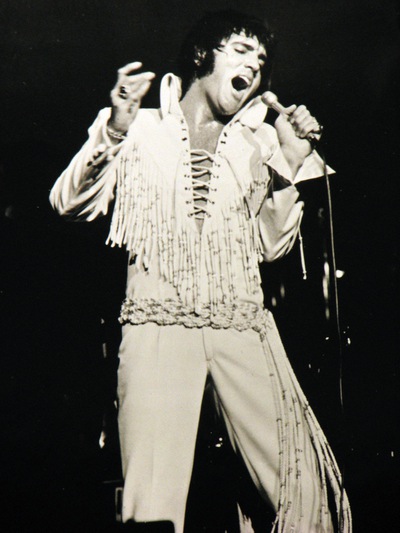

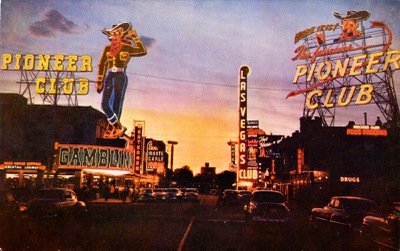
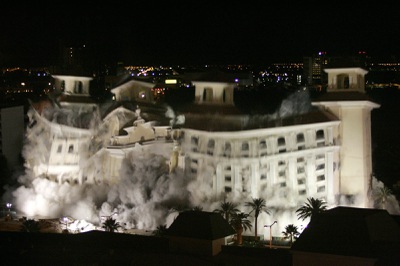
Join the Discussion:
Check this out for a full explanation of our conversion to the LiveFyre commenting system and instructions on how to sign up for an account.
Full comments policy